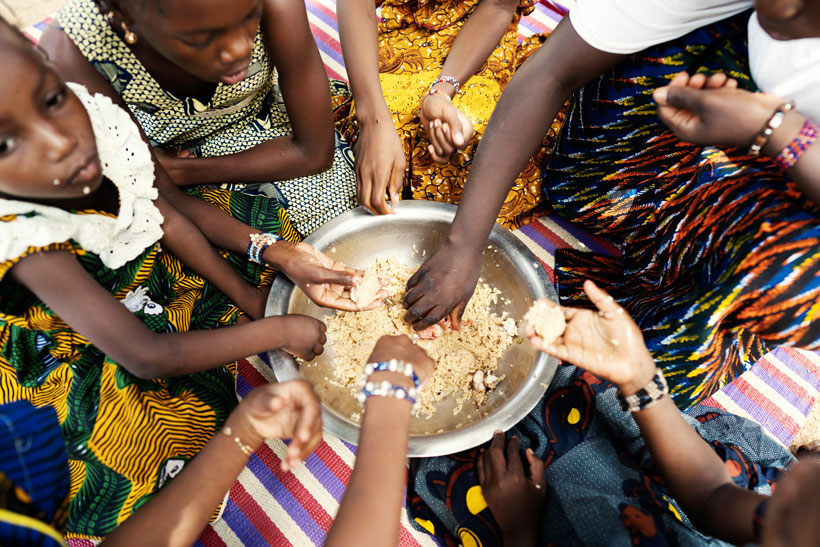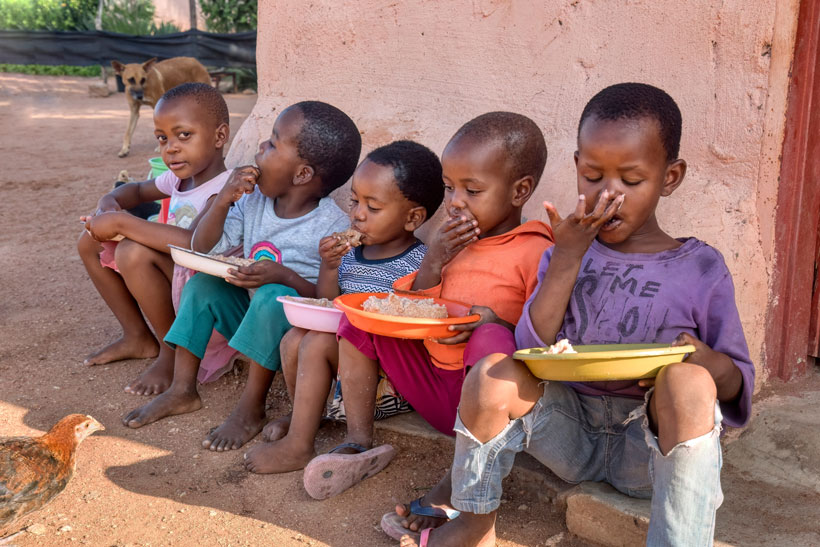by Mercy Lungaho, Program Lead, Nutrition, IITA
The cracked, barren fields in Zambia, Zimbabwe, and Namibia are not just scars on the land—they are warnings. Across Africa, millions of people stand on the brink of hunger as relentless droughts dry up farms, deplete water sources, and make futures uncertain.
The 2024 World Food Day theme, ‘Right to foods for a better life and a better future’, is more urgent than ever. In a world increasingly ravaged by climate change, reduced access to food is not the only problem, but so is the reduced access to nutritious food.
In times of scarcity, filling stomachs is not enough. Without access to essential nutrients, communities are left weaker, less able to withstand future climate shocks, and trapped in a cycle of vulnerability.
As a nutrition expert who works closely with farming communities, I have seen mothers skip meals so their children can eat. I have witnessed farmers watch their livestock die as rivers dry up. I have sat under a tree in the hot sun waiting all day for herders to bring home milk from camels that had to migrate far from home looking for pasture, only for my son to reject the smoked milk because of the pungent smell of the preservative used to keep it from spoiling. These experiences are not unique to me; journalists have written of mothers waiting to bury their children as famine looms. And these are not isolated events—they are the human face of the climate crisis sweeping across Africa.

Group of African girls sitting on a mat, dividing their frugal meal, eating with their hands from a large metal plate
According to the Food and Agriculture Organization of the United Nations’ 2024 State of Food Insecurity report, over 735 million people globally face food insecurity, with Africa hit especially hard by climate change. For families in Zambia, Zimbabwe, and Namibia, climate change is an everyday reality that is uprooting lives. Extreme droughts have decimated crops, reduced livestock yields, and destabilized food systems. Families are going to bed hungry, and once-thriving communities are fighting to survive. But this only becomes prime news when Namibia is forced to cull wild animals amid drought.
Proactive and urgent action is needed. The most vulnerable communities—those experiencing the greatest impacts of climate change, also suffer from the worst nutrition outcomes. While climate change directly affects food security and nutrition outcomes, the nutrition sector is often overlooked in discussions on mitigation and adaptation. So, stakeholders must prioritize the integration of nutrition into climate decision-making and financing frameworks. To ensure climate action positively influences diets, nutrition, and health, it is vital to represent nutrition and health priorities in climate dialogues. Tackling this challenge will require coordinated collaboration, aligned policies, and targeted investments.
Good nutrition is one of the most powerful tools we have to build climate resilience. Well-nourished populations are healthier, more productive, and better equipped to recover from environmental shocks. When children have access to diverse diets rich in fruits, vegetables, animal-source, and aquatic foods, they develop stronger immune systems, better cognitive abilities, and are more likely to grow into adults who can contribute to resilient, thriving communities.
However, research indicates that rising carbon dioxide (CO₂) levels in the atmosphere may reduce the nutrient content of plants—a phenomenon known as nutrient dilution. As climate change continues to evolve, nutrition outcomes are likely to fluctuate, requiring adaptable and flexible programming. To address this, nutrition stakeholders must proactively conduct research and design interventions that adapt to and mitigate the effects of both rapid and long-term climate changes on food systems and nutrition.
But we cannot afford to wait for ideal solutions. We need to apply the knowledge and tools already available to address the intersection of food systems, nutrition, and climate change. A promising solution lies in underutilized crops such as Bambara groundnut and African yam bean, which are being promoted by organizations like the International Institute of Tropical Agriculture (IITA). These crops are naturally resilient to drought and packed with essential nutrients. Promoting them is a prime example of how agriculture can evolve in response to climate change, ensuring food systems become more diverse, resilient, and equipped to manage future challenges.
The right to food is not just about survival—it is about securing the future. Food security is more than a humanitarian issue; it is a fight for justice, equity, and resilience.




No Comments